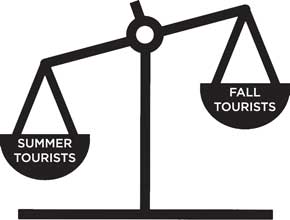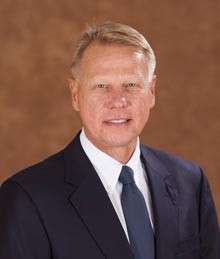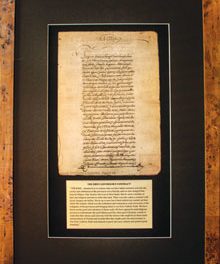Part 8: Spain Enter Port Royal Sound
You and I have been taught that America started with the English landing at Jamestown, Virginia in 1607. We have also been taught that the next major European settlement was Plymouth Rock, settled in 1620, also by the English. But the facts say otherwise. Last December I shared with you how France’s top admiral, Admiral Gaspar Coligny, talked his king, Charles IX, into planting the French flag in Spain’s La Florida. Admiral Coligny was a Huguenot, a French protestant. King Charles was a Catholic. And France was in religious turmoil. Admiral Coligny’s hope was that they would make La Florida a refuge for the Huguenots. In 1562 Admiral Coligny’s best sea captain, Jean Ribault, set sail with two ships, and 150 men, for Spain’s La Florida.
France just made a big tactical mistake. In 1562 it chose to establish a settlement in America on Parris Island. It really was not Parris Island that they wanted. They wanted a settlement next to Port Royal Sound. Port Royal Sound, of course, was the widest and deepest harbor on La Florida’s Atlantic Coast. And Port Royal Sound was at the “hinge” where the Spanish gold fleet had to turn east to return to Spain. If you wanted a settlement at a point where it could pick off the Spanish gold fleet, you would settle at Port Royal Sound.
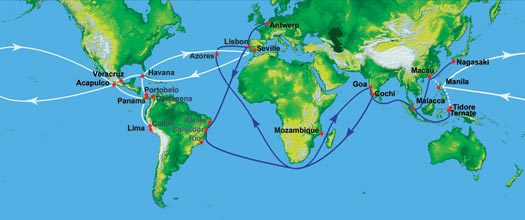
Spain was near bankruptcy. However, King Philip had to find a way to finance a multi-year effort to establish a permanent settlement in La Florida. He had a plan. He would ink a “conquest contract” with a strong leader to settle La Florida at the explorer’s expense. Under contract that explorer would receive a percent of the resources shipped to Spain and would also receive tax benefits, a huge estate, and the titles that go with running an entire colony. That leader, or Adelantado, as they called them, would have governmental control of La Florida for two lives. King Philip II knew of only one person who could do the job – his main Fleet Commander, Pedro Menendez de Aviles.
Menendez’s contract required him to do more than confirm Spain’s claim to La Florida. It charged him with creating two or three settlements. He was also asked to find an inland route to Mexico. That would give Spain a safer route to move bullion from Mexico to Spain.
Admiral Menendez had much more to do than establish settlements, he had to explore and expand inland. He was also charged with converting all Native Americans in the colony to the Catholic faith. In return he would get a cut of the wealth that would be shipped back to Spain.
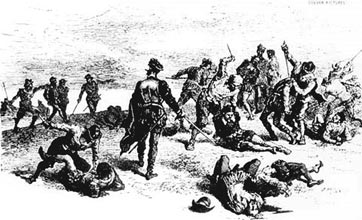
Pedro Menendez’s first task was to remove the French from La Florida. The French had already abandoned Charlesfort at Parris Island. In 1565 Menendez destroyed the French Fort of Fort Carolina near Jacksonville. To do this he established a military outpost and called it St. Augustine. Once Jean Ribault had landed near St. Augustine, Menendez killed him and destroyed his fleet. Spain’s Menendez completed his first assignment . . . to remove France from La Florida.
Menendez now had an entire country, or colony, to govern. It ran from the Florida Keys to Newfoundland and from the Atlantic to the Pacific Ocean. To govern this new country he needed a complete settlement that would also be the capital of La Florida. He made the same decision that France made. His choice was Parris Island on Port Royal Sound. His choice was the medieval Spanish town of Santa Elena.
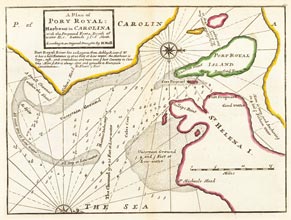
His strategy was this: Put a strong settlement, and fort, on Port Royal Sound. It was a perfect location for Spain. It could protect the very point where the Gold Fleet was vulnerable . . . where the fleet had to follow the Gulf Stream and turn east toward Spain. Santa Elena would become the first major European settlement in America from 1569-1587. It would also be the capital of La Florida from 1571-1576.
THUS, THE FIRST MAJOR EUROPEAN SETTLEMENT IN AMERICA WAS NOT JAMESTOWN, VIRGNIA, PLYMOUTH, MASS. OR ST. AUGUSTINE. IT WAS SANTA ELENA located on Parris Island. Santa Elena was largely a military outpost from 1566 to 1569. It became the first major European settlement in 1569. And it became the first European colonial capital in America in 1571. Dr. Rowland was right. “America really did start here.”
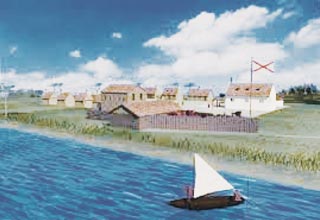
As a historical tourism asset, what does this mean to us? It means this: The French settlement of Charlesfort on Parris Island was not a major historical settlement. It lasted only one year. But Charlesfort was important because it triggered Spain to permanently settle North America. Even more important, we now know that America did not start at Jamestown, Virginia. It did not start at Plymouth Rock. It started at Santa Elena, located on Parris Island. Santa Elena, in 1569, was the first major European settlement in America. It was Spain’s first colonial capital in America. In Spain’s eyes, by 1571, Santa Elena was the capital of La Florida. And La Florida included all the territory that European explorers had identified as “America” at the time. Spain’s La Florida ran from Canada to the Keys and from the Atlantic Ocean to the Pacific. Think of this. In Spain’s eyes in 1571, Santa Elena was the capital of “America.” The only difference is that Spain didn’t call it “America.” They called it La Florida.

